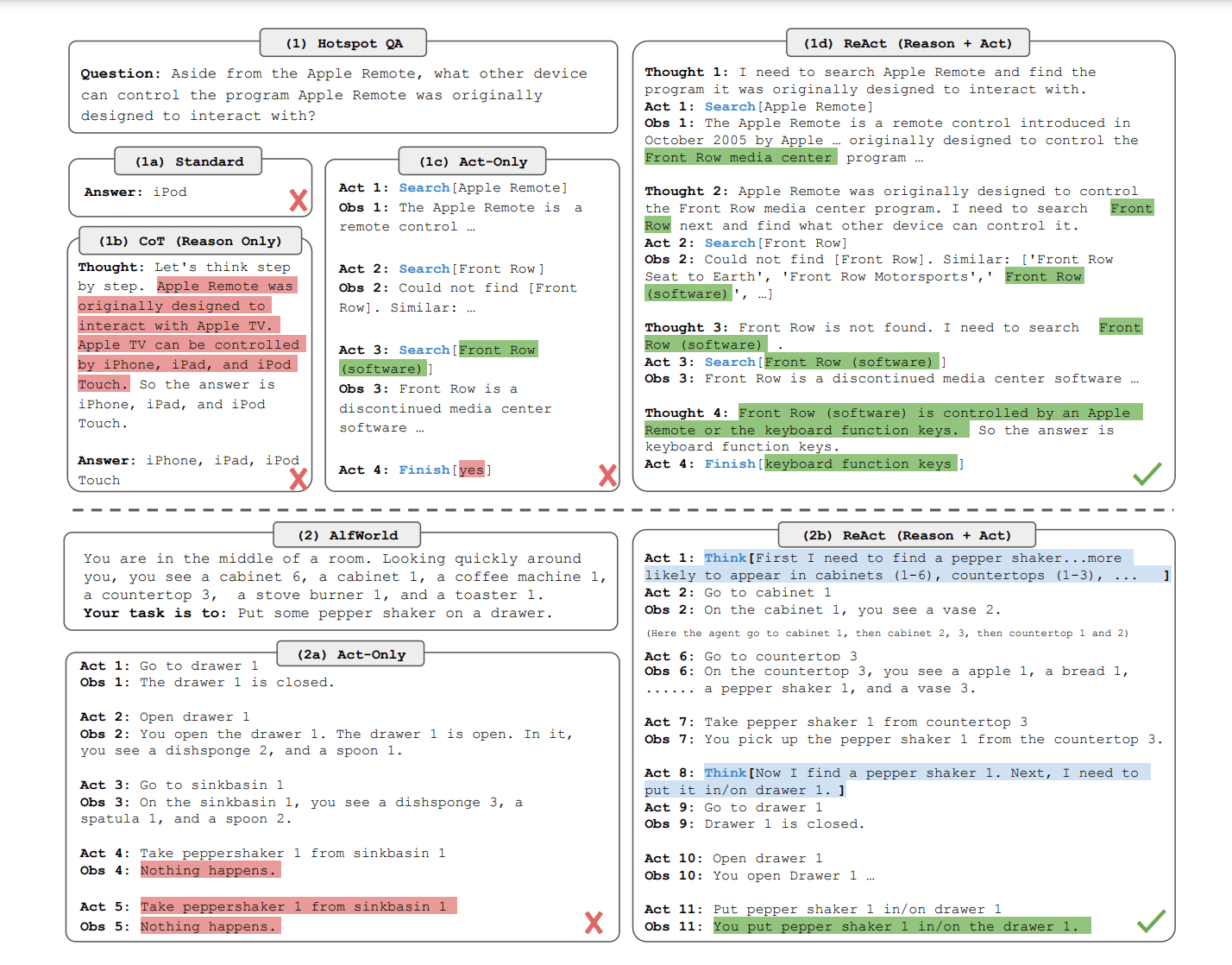
Large AI models like GPT-4 and Claude have shown impressive language skills. But they struggle with logical reasoning and decision-making when tackling complex real-world problems. Their impressive generated text too often contains factual mistakes or irrational logic.
Researchers from Princeton and Google propose an approach called ReAct that interleaves reasoning steps with actions to address this accuracy problem. It works like this:
- The AI takes a real-world action like searching Wikipedia for facts relevant to answering a question.
- It then reasons about those facts, analyzing if and how they help answer the question.
- Based on gaps in its reasoning, it decides the next external action to take to fill those gaps.
- And so on until it answers the question.
The key is the model must justify each action by reasoning over concrete evidence from the external world. This acts as a check against hallucinated facts or fallacious logic.
Experiments showed ReAct reduced factual mistakes in question answering by 14% compared to pure reasoning models. The external grounding forces more rational justification. In interactive games, mixing internal planning and external actions achieved over 30% higher success rates than acting alone without reasoning. The researchers believe this is a promising path to accurate and robust AI. Rather than blindly trusting an AI system's internally generated text, ReAct uses external data and actions to validate each reasoning step.
For business leaders, ReAct demonstrates the value of integrating different skills - natural language, logical reasoning, acting in the world - to overcome limitations of any single method. Just as humans leverage both internal and external knowledge.
As models advance, hybrid techniques like ReAct may be key to accurate reasoning and decision-making. Combining neural network strengths with classical methods like search and symbolic logic mitigates weaknesses.
The end goal is AI that not only speaks convincingly but also truly understands the world and acts accordingly. ReAct offers a template to get there.
Source:


